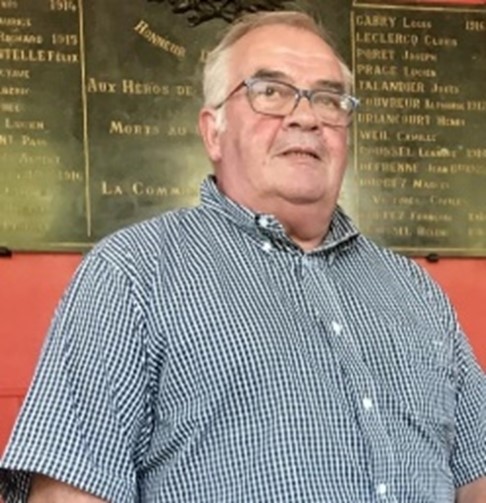Could you introduce yourself, your municipality, your CC and your department?
I’ve been mayor of Ligny-Thilloy since 2020, 1st deputy since 2001 and councillor since 1983. Ligny-Thilloy has 540 inhabitants and is a rural commune in the Hauts de France region, part of the Sud Artois community of communes.
Why host a wind farm in your area?
Since the 2000s, we’ve been firmly committed to sustainable development, so it seemed only natural that we should be asked to host a wind farm. It’s a global project. We have also insulated our buildings and installed a heat pump to heat the village hall and the town hall.
Did the town council approve the project straight away?
The mayor at the time presented the project progressively to the town council, there were no votes against it and the council accepted the project unanimously. We held several information meetings with Volkswind throughout the project. The Volkswind people were always available to answer any questions we had.
How was the project presented and received by local residents?
There were a few people against the project, but it was limited to a few comments. Some people were worried about noise pollution and television reception. But it was never a major issue. Now there’s only one person living near the wind turbines who’s complaining. And yet there have been sound checks on the ground which have proved that there is no increase in noise with wind turbines. Be that as it may, I’m always ready to listen to each and every resident.
What was your relationship with Volkswind during the project?
At the beginning, a project manager came to the council meeting to present the project. Later, we also had people from Volkswind who came with an exhibition to explain the project to the residents. Everything went well with the various people from the company.
How has this wind farm fitted in with your surroundings?
Personally, I think they blend in well because I don’t see them anymore. There are no castles or memorials nearby. You know very well that a wind turbine is 250 metres high, you can’t walk past it without seeing it. When you’re in the village, you can hardly see them; they’re right in the middle of the fields. We have a very large village, so it doesn’t bother us. It’s like the very high voltage lines, you can’t see them anymore.
What projects or work have been carried out thanks to the arrival of the wind turbines?
At the moment, we haven’t yet decided what we’re going to do with the financial spin-offs. We mainly have projects that will save energy. We’re planning to change the street lighting and put in LED bulbs. We still have a house with an oil-fired boiler, and we want to install a heat pump.
After that, I’ll be proposing interior alterations, extensions and insulation work for the multi-purpose hall. We’ll also be looking into the possibility of installing photovoltaic panels on the roof.
In any case, these financial benefits will enable us to look to the future a little more calmly. What I want to do is invest in the upkeep of the municipal buildings. We’ve also talked about building a city stadium and burying the networks in front of the town hall.
In a few years’ time, we won’t have any businesses or tradespeople coming to set up in our small communities. Thanks to the wind turbines, we can maintain our budget and envisage new projects. That’s another reason why I want the 2nd project to go ahead. To ensure the town’s continued financial health.
What would you say to other mayors about your experience with wind turbines?
There was an article in the press about our village with the headline: “A village that loves its wind turbines”. In our area, it’s starting to get complicated. But it does bring in money for the local council and there’s also the environmental aspect: wind-generated electricity is green energy.





